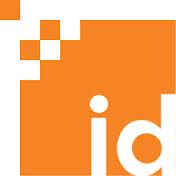Integrated Offering Enables Joint Customers to Centrally Manage Provisioning of Corporate Assets and Application Access with full Governance, Security, and Efficiency
New York, NY– Oct 23, 2013: Identropy today announced full integration of Identropy’s IDaaS platform, SCUID Lifecycle into Zendesk’s leading platform for proven, cloud-based customer service software. The combined, best–of-breed offering is the first to deliver the breadth and depth of integration required for true Closed Loop Provisioning – a scenario in which relevant information entered into one system can be “seen” and acted upon by the other. By providing seamless integration, Identropy finally eliminates the governance, security and efficiency gaps that occur when organizations require multiple systems to provision different types of assets. More on Closed Loop Provisioning can be found in a new white paper, published today by Identropy.
“Identropy is a huge fan of Zendesk – we share its passion and commitment to delivering an extraordinary customer experience, and that is exactly what Closed Loop Provisioning provides,” said Ranjeet Vidwans, vice president of Business Development, Identropy. “All too often, IT Service Management and Identity Management systems are clumsily mashed together. Seamless integration between our solutions ensures full alignment, tight security, and strong governance while administering physical and logical assets.”
IT Service Management (ITSM) systems are used primarily by IT staff to provision “global” resources (laptops, mobile devices, email access) and Identity Management (IDM) systems are primarily used by business managers or end users for job specific functions (i.e., the marketing team requires Hubspot and Twitter access). However, there are always overlaps and/or gray areas, as well as out-of-band requests and approvals that are not captured by either system. Not only does this create confusion over which system should be used for what asset, it also introduces a host of process, security and audit issues.
By integrating with Zendesk, Identropy has addressed this challenge by providing the following first to market functionality:
1) Establishes mapping between services (as defined in Zendesk) and resources (as defined in SCUID Lifecycle)
2) Allows a manager to “onboard” SaaS applications that they need for their departments into SCUID Lifecycle, and indicate that they need to be fulfilled via Zendesk.
3) Enables users to make requests regarding these applications from SCUID Lifecycle, including the ability to request and provision of fine-grained entitlements through a user-friendly entitlement catalog.
4) Ensures requests in SCUID generate a ticket in Zendesk so its ticket resolution process can kick in.
5) Enables the ability to monitor the status of that ticket for successful resolution, or the appropriate failure codes.
6) Ensures reconciliation of that ticket in the SCUID Lifecycle so that IDM capabilities, such as periodic access recertification, can kick in as needed.
“Identropy shares our commitment to deliver an exceptional service experience,” said Conan Reidy, vice president of business development, Zendesk. “With this integration, we look forward to providing customers around the world with efficient, seamless and secure customer support.”
About Identropy
Identropy is a leading Identity as a Service (IDaaS) provider, whose offerings enable organizations to derive maximum value from their Identity and Access Management (IAM) initiatives in the most cost-effective manner. Providing domain expertise across the entire IAM lifecycle, Identropy’s Advisory, Implementation and Identity-as-a-Service (IDaaS) service offerings have already benefited more than 150 organizations. Identropy’s innovative Secure Cloud-based Unified Identity (SCUID) platform enables organizations to reduce the cost and complexity, optimize day-to-day management, and accelerate time-to-value of their IAM investments. Founded in 2006, Identropy is a privately held company. For more information visit www.identropy.com.
The opinions expressed in this post belongs to the individual contributors and do not necessarily reflect the views of Information Security Buzz.




